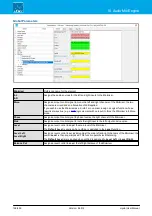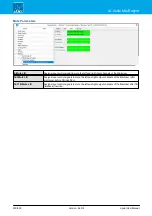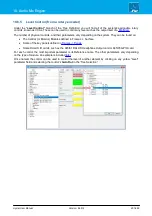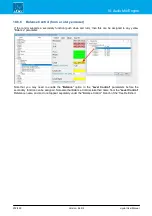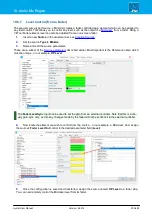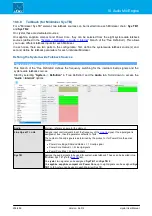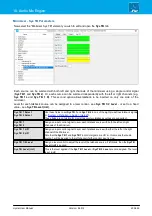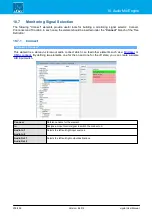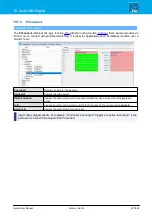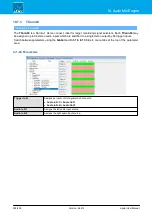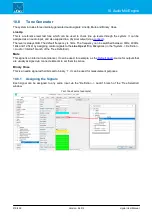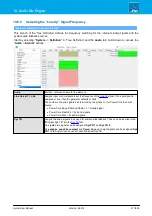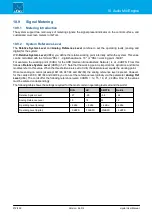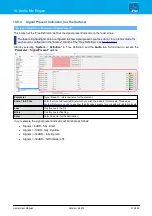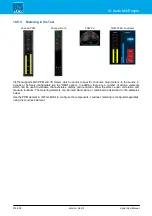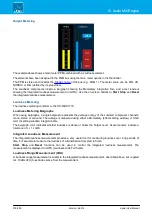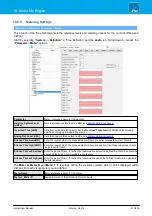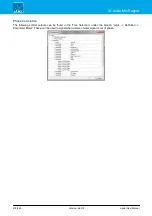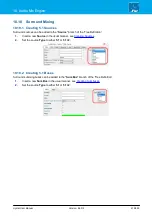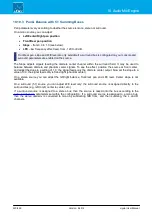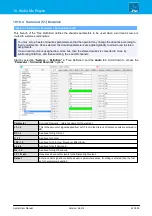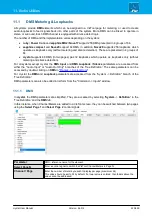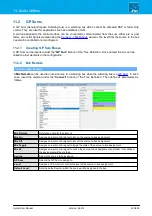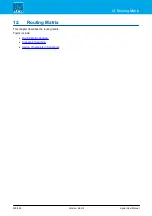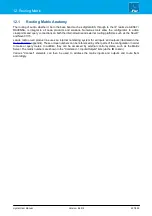
crystal User Manual
Version: 6.6.0/2
212/459
10. Audio Mix Engine
10.9
Signal Metering
10.9.1
Metering Introduction
The system support two main ways of metering signals: the signal present indicator on the control surface, and
customized on-screen meters in VisTool.
10.9.2
System Reference Level
The
Relative
System Level
and
Analog Reference Level
combine to set the operating levels (analog and
digital) for the system:
With
Relative System Level
(dBFs) you define the relative working point internally within the system. This value
can be calculated with the formula "RSL = - digital headroom - 18" or "RSL = working point -18dB".
For example, the working point (0 dBr) for the ARD (German Broadcasters’ Network) is at -9 dBFS. From this
follows a
Relative System Level
(dBFS) of -27. Note that the working point is important as dynamics and limiter
modules refer to this value. When the threshold value is set to 0 dB, the absolute level equals the working point.
On some analog i/o cards (all except 941/83, 941/84 and 942/84) the analog reference level is preset. However,
for the cards 941/83, 941/84 and 942/84 you can set the reference level globally via the parameter
Analog
Ref
Level
(dBu). The cards offer the following reference levels: 0 dBFS = 12, 15, 18, 21, 24 dBu. One of the values
must be entered correspondingly.
The following table shows the settings required for the most common operating levels around the world:
DIN
UK
SMPTE
Nordic
Relative System Level
- 27
- 28
- 38
- 24
Analog Reference Level
15
18
24
12
Operating Level (analog)
+6 dBu
+ 8 dBu
+ 4 dBu
+6 dBu
Operating Level (digital)
- 9 dBFS
-10dBFS
-20dBFS
- 6 dBFS

